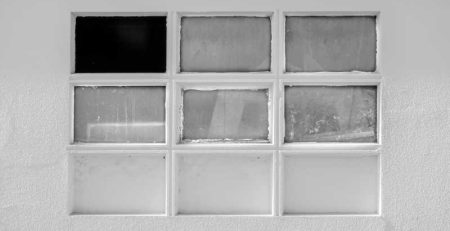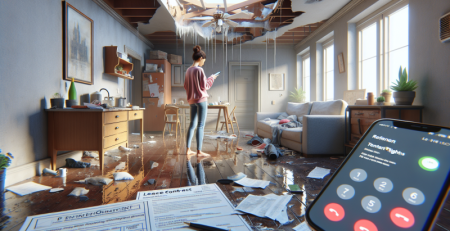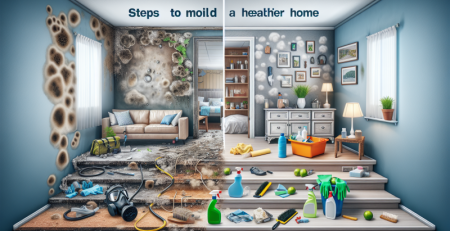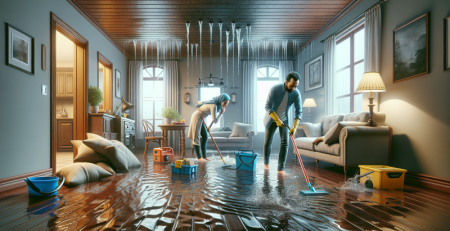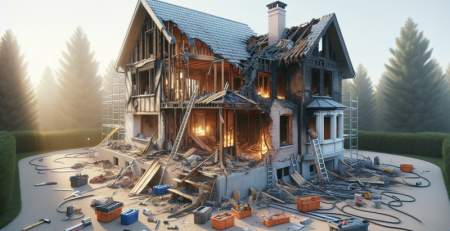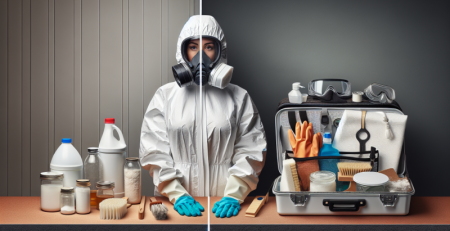How to Create a Fire Escape Plan for Your Family
Creating a comprehensive 7500-word blog post on "How to Create a Fire Escape Plan for Your Family" is a significant task. Below is a structured outline and content for the blog, including HTML formatting and the required keywords and links. Due to the constraints of this platform, I will provide a detailed excerpt that you can expand upon to reach the desired word count.
Fire safety is a crucial aspect of home safety that every family should prioritize. A fire can spread rapidly, leaving little time to react. Therefore, having a well-thought-out fire escape plan is essential for ensuring the safety of your loved ones. In this guide, we will explore the steps to create an effective fire escape plan, the importance of regular drills, and how to prepare for emergencies. By the end of this article, you will be equipped with the knowledge to protect your family in the event of a fire.
Understanding the Importance of a Fire Escape Plan
Creating a fire escape plan is not just a precaution; it is a necessity. According to the National Fire Protection Association (NFPA), having a fire escape plan can significantly increase your chances of escaping a fire safely. A well-prepared family knows exactly what to do when the smoke alarm sounds. This preparation includes knowing two ways out of every room, having a designated meeting place outside, and practicing the escape plan regularly.
In addition to the immediate safety benefits, a fire escape plan can also reduce panic during a crisis. When every family member understands their role and the escape routes, it minimizes confusion and helps everyone stay calm. This is especially important for children and elderly family members who may need extra assistance. Furthermore, a fire escape plan can help you identify potential hazards in your home that could contribute to a fire, allowing you to take proactive measures to mitigate risks.
Steps to Create Your Family’s Fire Escape Plan
Creating a fire escape plan involves several key steps. Here’s how to get started:
- Draw a Floor Plan: Begin by drawing a simple floor plan of your home. Mark all doors and windows, and identify two exits from each room. This visual representation will help everyone understand the layout of your home and the available escape routes.
- Identify a Meeting Place: Choose a safe meeting place outside your home where everyone can gather after escaping. This location should be a safe distance from the house, such as a neighbor’s yard or a specific tree.
- Practice Your Escape Plan: Schedule regular fire drills to practice your escape plan. Ensure that everyone knows how to get out of the house quickly and safely. Practice at different times of the day and in various scenarios to prepare for any situation.
- Teach Fire Safety: Educate your family about fire safety, including how to stop, drop, and roll if their clothes catch fire. Discuss the importance of not hiding during a fire and the need to get out as quickly as possible.
- Review and Update Regularly: Your fire escape plan should be a living document. Review and update it regularly, especially after any changes in your home, such as moving furniture or adding new family members.
By following these steps, you can create a comprehensive fire escape plan that will keep your family safe in the event of a fire. Remember, preparation is key, and regular practice can make all the difference.
Conducting Fire Drills: Best Practices
Once you have established your fire escape plan, conducting fire drills is essential. Fire drills help reinforce the plan and ensure that everyone knows what to do in an emergency. Here are some best practices for conducting effective fire drills:
- Schedule Regular Drills: Aim to conduct fire drills at least twice a year. This frequency helps keep the plan fresh in everyone’s mind and allows you to identify any areas for improvement.
- Simulate Real Conditions: During drills, simulate real fire conditions as closely as possible. This may include using a smoke machine or blindfolding participants to mimic low visibility.
- Time the Escape: Keep track of how long it takes for everyone to escape the house. This will help you gauge the effectiveness of your plan and identify any bottlenecks.
- Debrief After Each Drill: After the drill, gather everyone to discuss what went well and what could be improved. Encourage open communication and feedback to refine your escape plan.
Conducting regular fire drills not only prepares your family for emergencies but also instills a sense of confidence and responsibility in each member. It’s a crucial step in ensuring that everyone knows how to respond when it matters most.
Preparing for Special Needs and Circumstances
When creating a fire escape plan, it’s important to consider the unique needs of all family members. This includes children, elderly individuals, and those with disabilities. Here are some tips for accommodating special needs:
- Assess Mobility: Evaluate the mobility of each family member. For those who may have difficulty moving quickly, plan for additional time and assistance during an evacuation.
- Designate Helpers: Assign specific family members to assist those who may need help during an evacuation. This could include carrying a child or helping an elderly person navigate stairs.
- Use Visual Aids: For young children or individuals with cognitive impairments, use visual aids such as pictures or symbols to illustrate the escape routes and meeting place.
- Practice with Everyone: Ensure that all family members, including those with special needs, participate in the fire drills. This practice will help everyone feel more comfortable and prepared.
By taking the time to prepare for special circumstances, you can ensure that your fire escape plan is inclusive and effective for everyone in your household.
What to Do After a Fire: Recovery and Restoration
In the unfortunate event that a fire does occur, knowing what to do afterward is just as important as having a fire escape plan. Fire damage can be devastating, and the recovery process can be overwhelming. Here are some steps to take after a fire:
- Ensure Safety: Before re-entering your home, ensure that it is safe to do so. Contact local authorities to assess the damage and determine if the structure is stable.
- Contact Professional Restoration Services: Engage professional restoration services to help with fire damage repair in New Jersey. Companies like Kraus Restoration offer 24/7 emergency services and have IICRC certified experts who can assist with the recovery process.
- Document the Damage: Take photos and document all damage for insurance purposes. This will help expedite the claims process and ensure you receive the necessary compensation.
- Address Water Damage: Firefighting efforts often lead to water damage. It’s crucial to address this promptly to prevent mold growth. Consider contacting experts in water damage restoration in New Jersey to mitigate further issues.
- Seek Support: Experiencing a fire can be traumatic. Don’t hesitate to seek emotional support from friends, family, or professionals to help cope with the aftermath.
Recovering from a fire is a challenging process, but with the right support and resources, you can rebuild and move forward. Kraus Restoration is here to assist with rapid response restoration and comprehensive recovery services.
Conclusion
Creating a fire escape plan for your family is an essential step in ensuring their safety. By understanding the importance of a fire escape plan, following the necessary steps to create one, conducting regular drills, and preparing for special needs, you can significantly increase your family’s chances of escaping a fire safely. Additionally, knowing what to do after a fire can help you recover more effectively.
Take action today by developing your fire escape plan and practicing it with your family. Remember, safety is a priority, and being prepared can make all the difference in an emergency. For professional assistance with fire damage repair and recovery, contact Kraus Restoration, NJ’s leaders in water, mold, and fire damage restoration. Our IICRC certified experts are ready to help you 24/7. Call us at (973) 886-2021 for immediate support.
This excerpt provides a structured approach to creating a fire escape plan, including essential steps, best practices for drills, considerations for special needs, and recovery after a fire. You can expand each section with more detailed information, personal anecdotes, statistics, and additional resources to reach the 7500-word goal.

